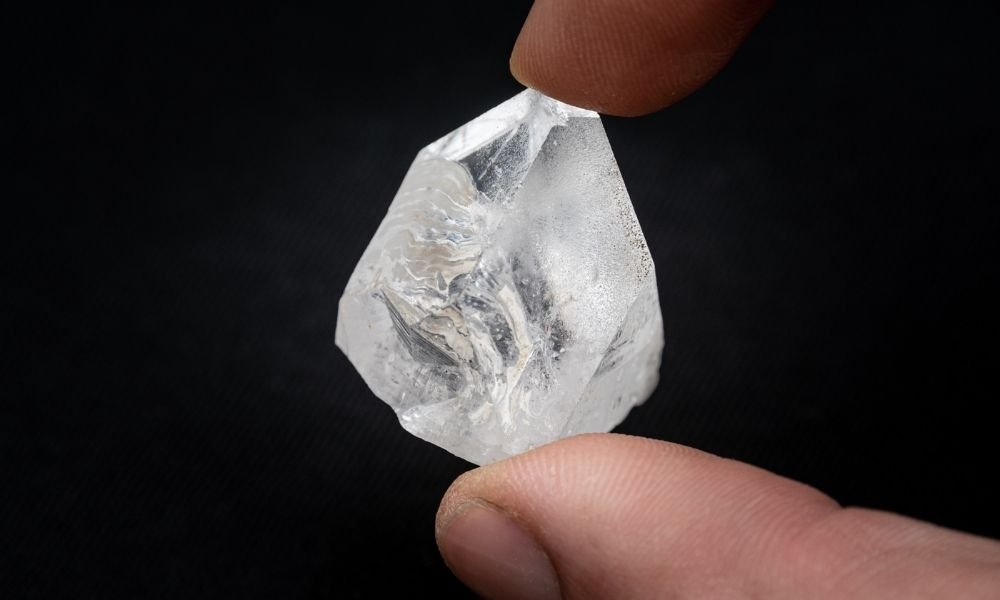What do you love about gemstones? Is it their color? Their sparkle? Their historic meaning or spiritual energy? One of the less common answers, perhaps, is “the fascinating science behind them.” But if you knew about the perfect storm of conflicting factors that create them deep in the Earth, you’d admire them even more. It’s an epic evolution, and the process of how gemstones are formed can be millions of years in the making.
A Crystal Caveat
Depending on your definition of “gemstone,” you can estimate that there are about 200 varieties of gems. They’re essentially the hardest, most beautiful forms of minerals—and there are thousands of those. Every gem looks different because all gems are formed differently. Until we can journey to the center of the Earth and see that process for ourselves, an element of mystery about the origins of gemstones will remain. But an overview of how gems are created can help you realize just how incredible these treasures are.
So how are gemstones formed? You should know up front that:
- There’s more than one answer to the question.
- The answers are… complicated.
- There will not be a quiz on this.
Making Minerals
Most minerals began, at minimum, thousands of years ago. It may feel like we’re on solid ground, but the Earth is constantly churning on the inside. Enormous tectonic plates are crashing into each other. Molten rock—yes, Dr. Evil, magma—is bubbling beneath our feet. Violent, clashing forces interact with each other to ultimately produce the incredible gems we enjoy today.
Chemicals in the magma began to take shape as crystals, with the right combination of these factors:
- Ingredients
- Temperature
- Pressure
- Time
- Space
If you’ve ever watched rock candy form or if you’re familiar with how water turns into snowflakes, those can give you visuals of what it takes to begin this process.
Crystals are identified by highly ordered, repeating patterns, but as they’re developing, all kinds of tumultuous forces buffet them around. Temperatures fluctuate dramatically. New elements are introduced. The roiling magma breaks off bits of the Earth’s crust and creates cavities up to 25 miles deep—ideal environments for gem formation. Chemical-rich fluids escape from the magma and flow in and out of the cavities, giving the crystals enough space to grow. The pressure is high. Time passes.
Reaching the Surface
How do gemstones that were born miles and miles inside the Earth make it to the surface? One shortcut is through a volcano. Gas can build up under the magma and push it through vents in the surface. Once it erupts into the air, the magma is considered lava. Its mineral-rich deposits build up over centuries with all kinds of crystals and stones inside. Ancient inactive volcano sites can become profitable mines when rare gems are discovered.
Some Specific Science
There’s actually a variety of processes that form gemstones, and if you’re seated next to a geologist at a dinner party, you might hear about many of them. Again: it’s complicated. Minerals can be formed, destroyed, and recreated over and over until they’re finally crafted into gemstone trees. These are a few methods:
Phenocrysts
When a crystal forms but is rushed toward the surface of the Earth, it can cool inside and throughout rocks. That’s how you can find moonstones, garnets, zircons, and even some rubies and sapphires.
Gas Crystallization
Some crystals grow on the bases of other minerals, but some are actually created in gas bubbles. These include quartz, garnet, topaz, and spinel.
Contact Metamorphism
Magma can move with so much force that it can bully its way right into existing rock formations. The rocks melt and recrystallize into stones such as garnet, corundum, spinel, and lapis lazuli.
Regional Metamorphism
Things can get violent on the Earth’s surface, too. Continental plates clash and result in mountains. Through millions of years, these land masses create intense heat and pressure, which in turn create unique gemstones such as East African tsavorite. Tanzanite is named after Tanzania, the only country in which it’s found.
A Few Favorite Gems
Some gemstones are so rare, clear, and gorgeously colored that they become jewelry that’s passed down for centuries. Some of these minerals travel from the center of the Earth, miles and miles to the surface, through heat and time and pressure, and become… rocks.
In between those extremes is a countless number of exquisite gemstones that are just now becoming popularly celebrated for their unique qualities. Brazilian gemstones in particular are so glorious that they’re often used in décor or to energize an atmosphere. This is how a few of our favorites come to us:
Amethyst
These rich purple crystals are part of the quartz family. Brazil is blessed to have so many of these gems, which form inside bubbles of lava. Water flows in and out of these cavities, with substances such as iron turning the quartz a distinctive violet hue.
Citrine
Brazil’s Rio Grande do Sul region is home to citrine deposits; citrine is closely related to amethyst. In some cases, the citrine was originally an amethyst or smoky quartz that was transformed by heat. Like amethysts, citrine is special in that it forms inside geodes—ho-hum–looking rocks that, when cracked open, reveal dazzling caves of crystals.
Agate
These minerals are amazing additions to homes because they vary so much in color, pattern, and size. They’re usually polished as slices that can show off the alternating bands of quartz and chalcedony. They grow on host rocks inside lava cavities, and their layers make them difficult to date. Agate slices are striking as one-of-a-kind tabletops or art displays.
At Brazil Gems, we specialize in ethically mined stones that independent local artists handcraft into sparkling masterpieces. We offer a large variety of gems that you can buy wholesale; we also offer gorgeous items such as our bonsai-inspired gemstone trees. If you’re intrigued by what you’ve read here, there’s so much more to learn about Brazilian stones such as garnet, tiger’s eye, carnelian, and jasper. Explore these South American riches on our website, and reach out to us for more information.


